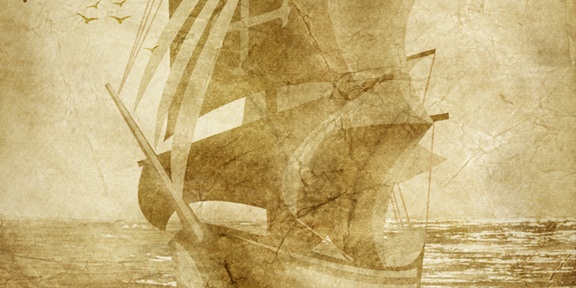This Week in History, Columbus Sails the Ocean Blue
By Biographile

Columbus Ship/Photo © Go Bananas Design Studio
Biographile’s This Week in History remembers events of the past, and the icons that set them in motion.
Believing he had sailed to East Asia, Christopher Columbus reached the Americas on October 12, 1492 -- this week in history. Columbus, an Italian explorer, voyaged westward to reach the East Indies under the auspices of Isabella and Ferdinand of Spain. The reason for the expedition, other than finding a western ocean route across the Atlantic toward Asia, was to gain an upper hand in the gold and spice trade. Instead, Columbus's voyage introduced a period of western imperialism and European exploration and colonization.
Columbus -- or in Italian, Cristoforo Colombo -- was born in Genoa, Italy on October 31, 1451 to Domenico Colombo and Susanna Fontanarossa. Columbus's father was a middle-class wool weaver and cheese stand owner. Little else is known about his early life, but records show that Columbus quickly became obsessed with the sea.
Columbus's journey to find a direst, western route to Asia was rejected several times, but on August 3, 1492, Columbus finally set sail with three small ships: the Nina, the Pinta, and the Santa Maria.
In his lifetime, Columbus helmed four different expeditions to the New World. He discovered several Caribbean islands, the Gulf of Mexico, and the South and Central Americas. He died in Spain in 1506 without ever fully realizing his achievements.
